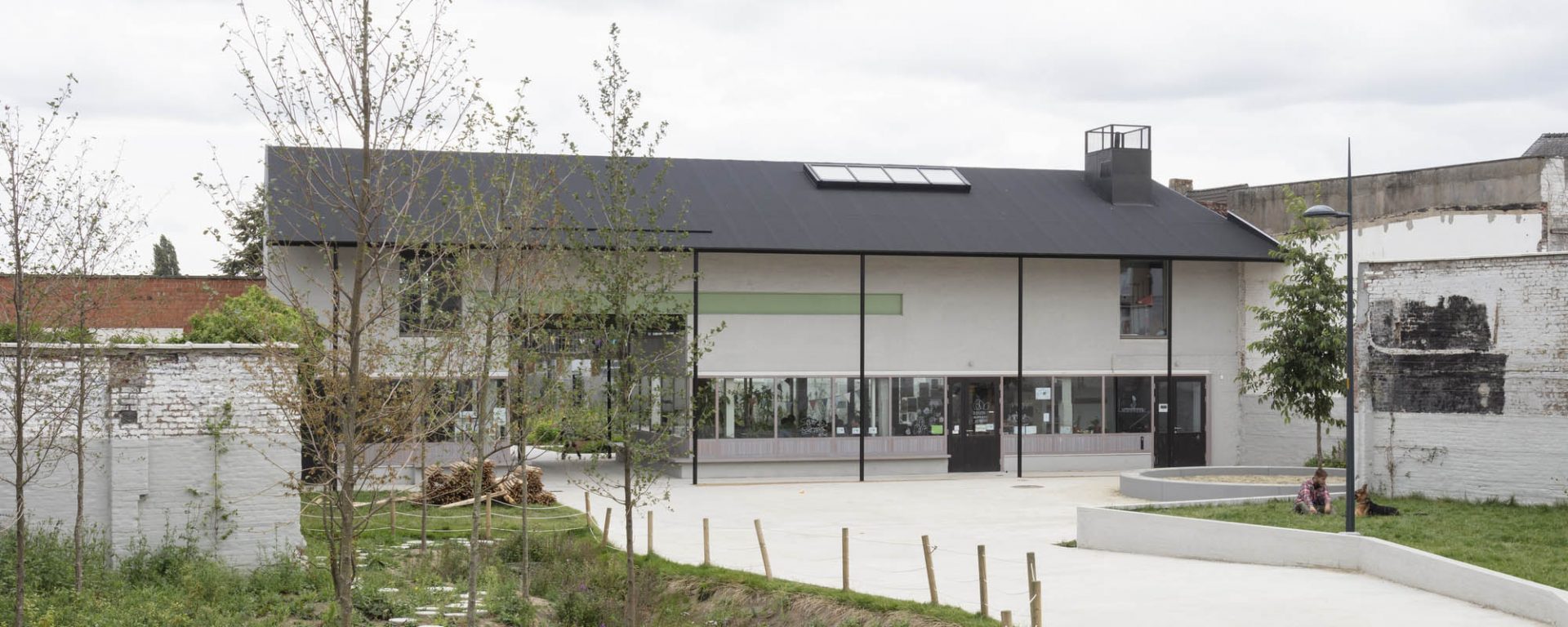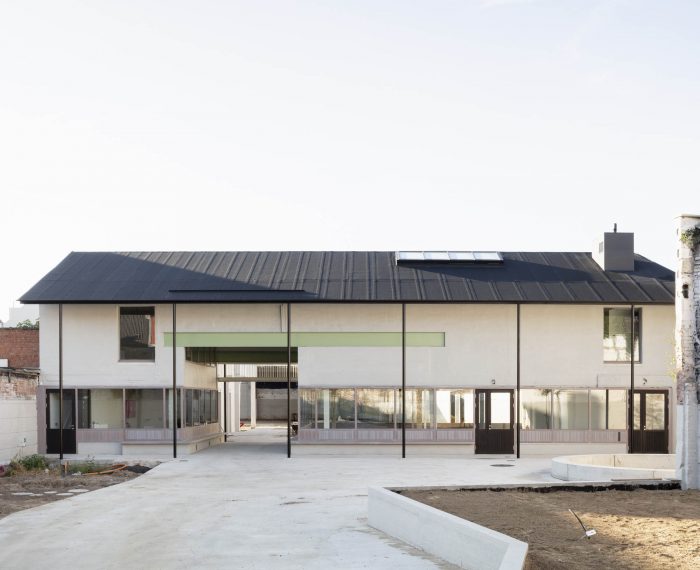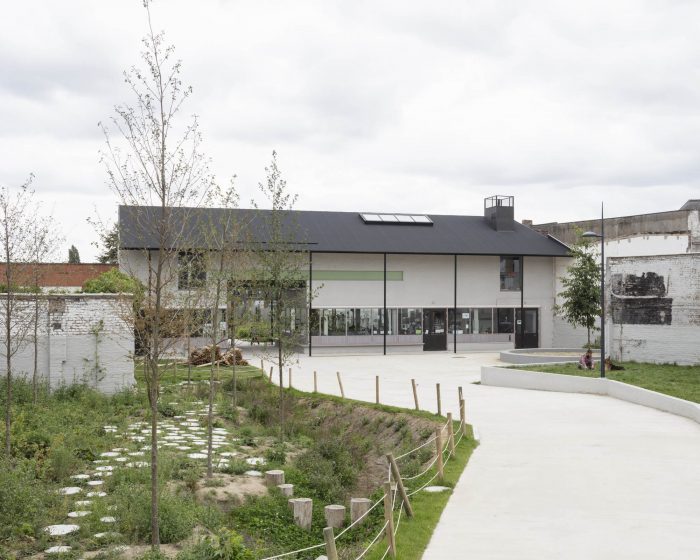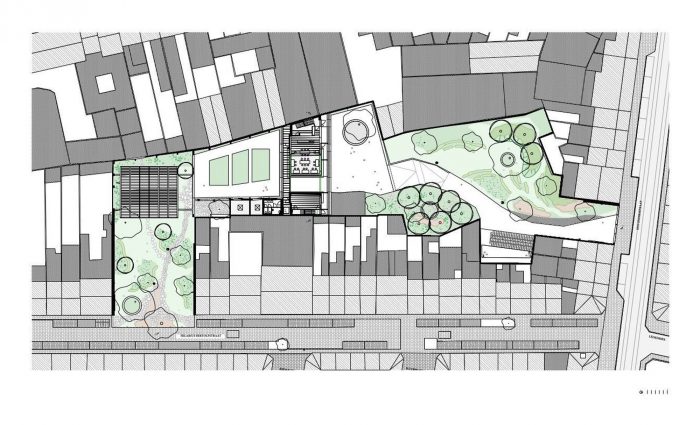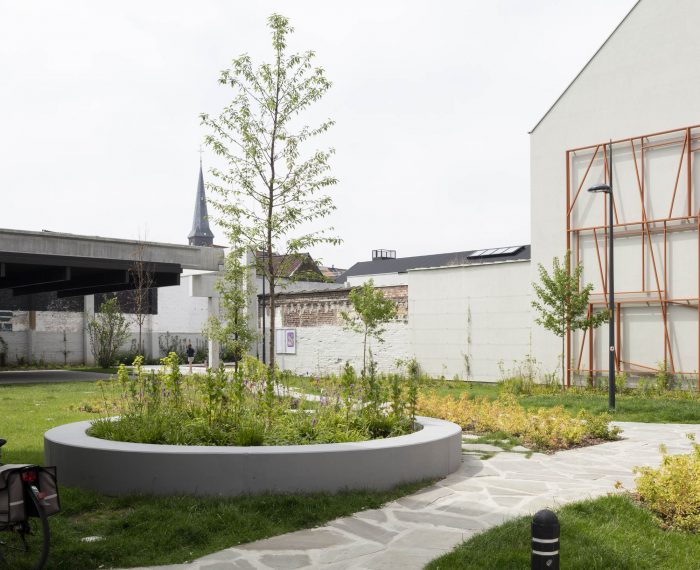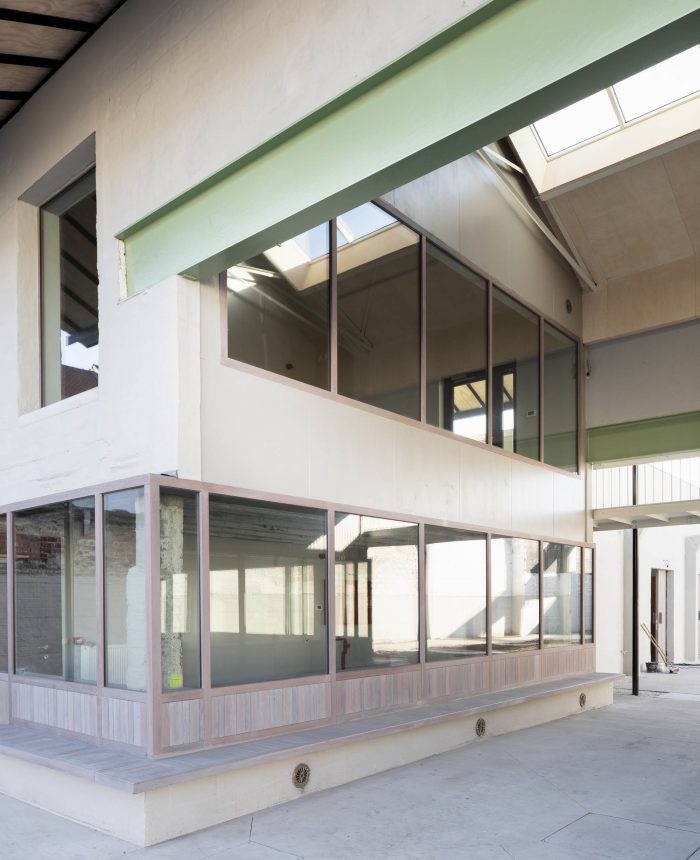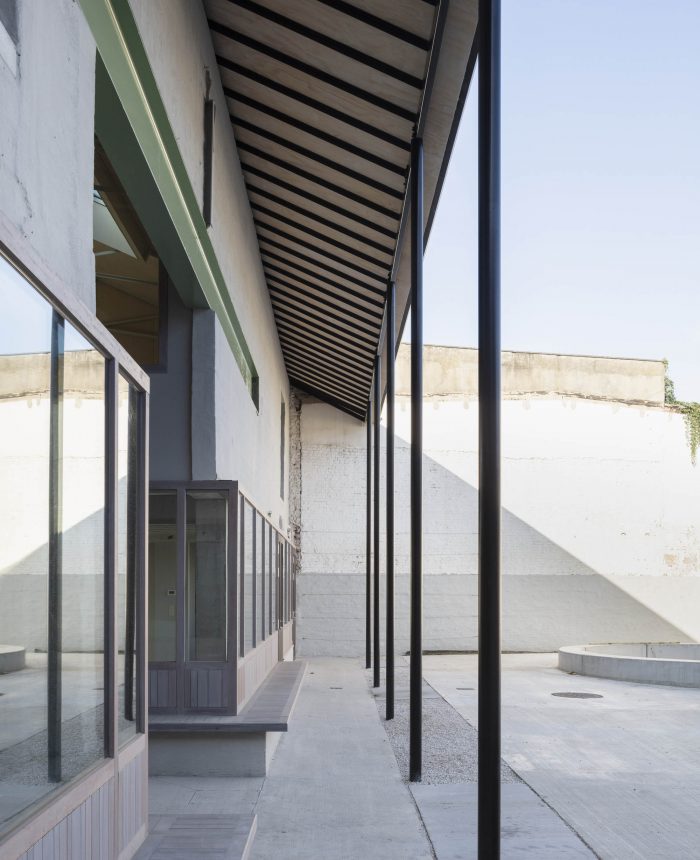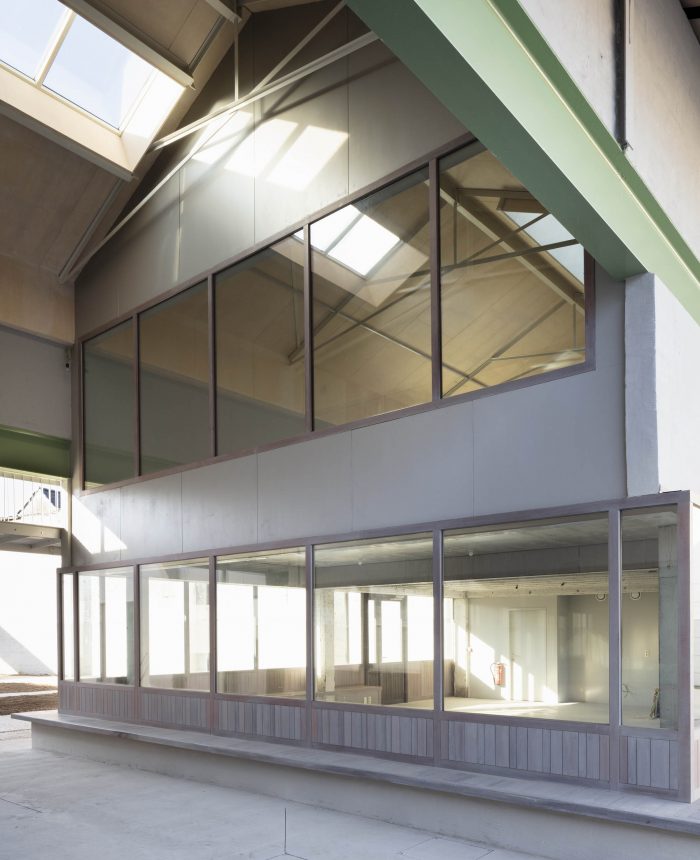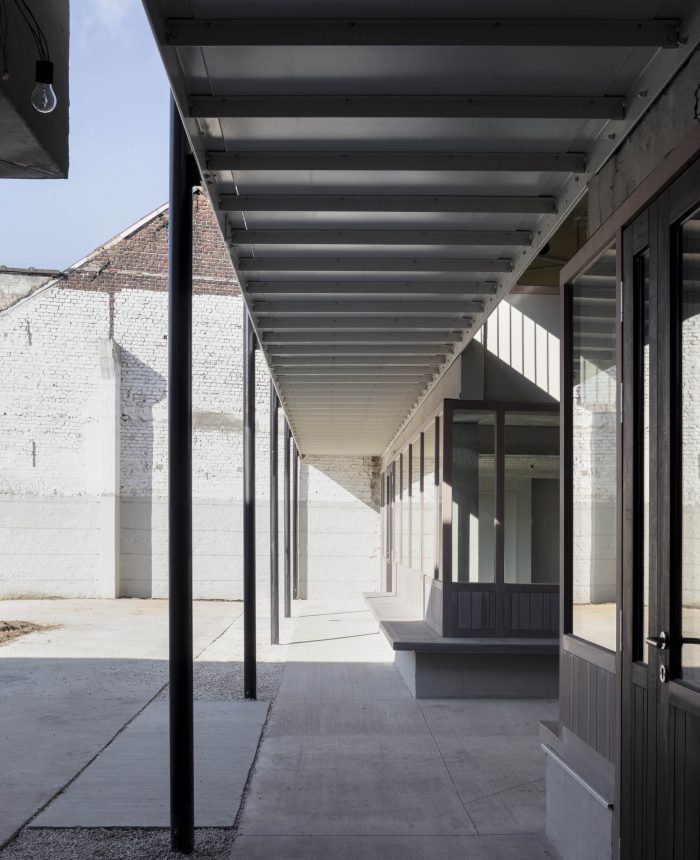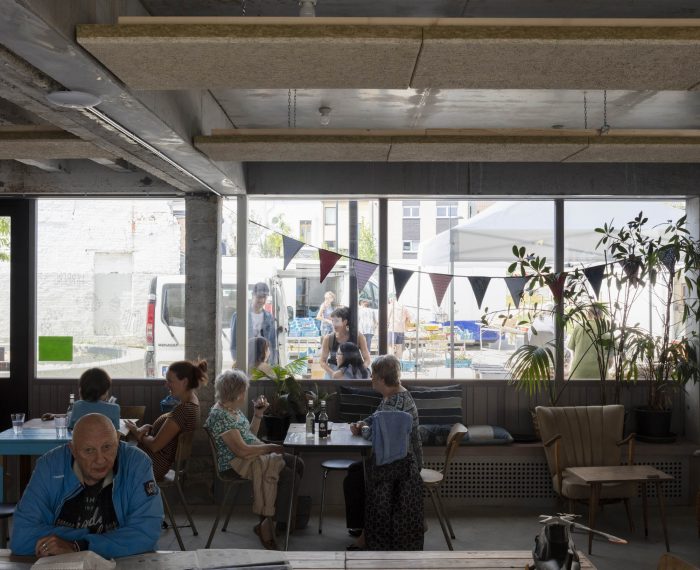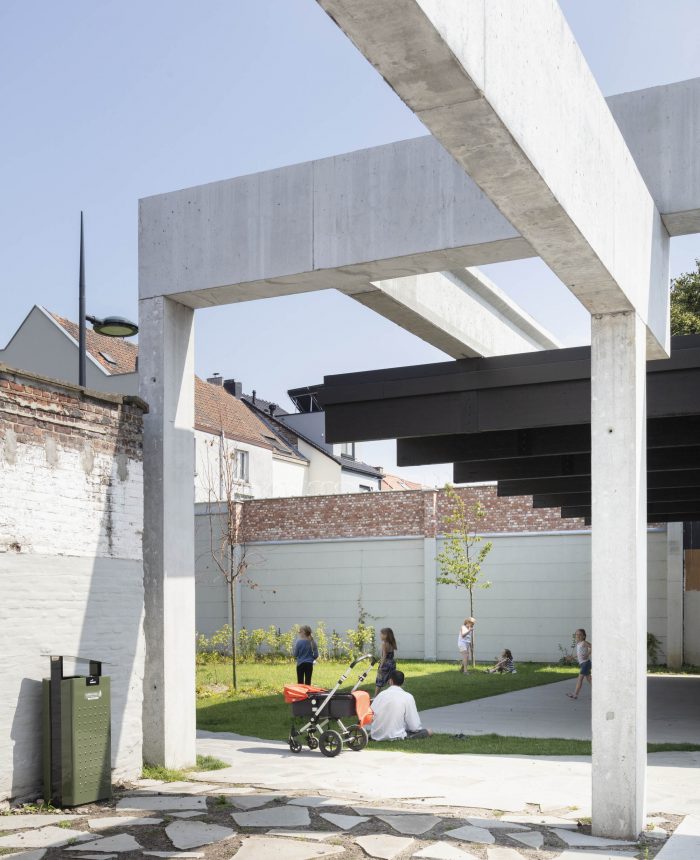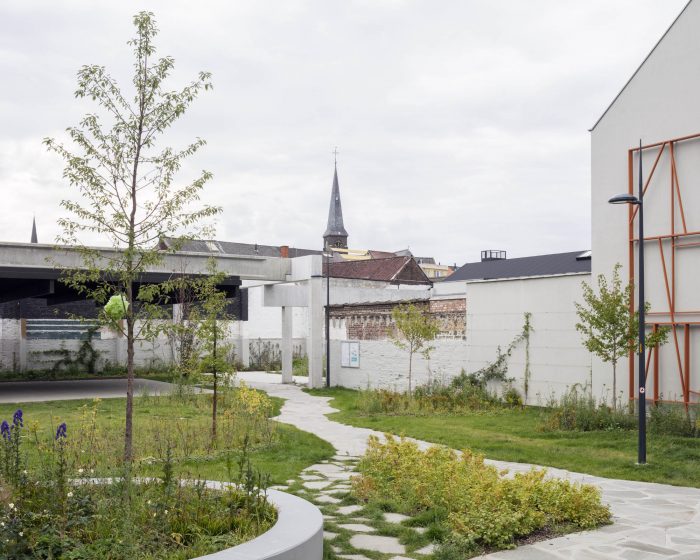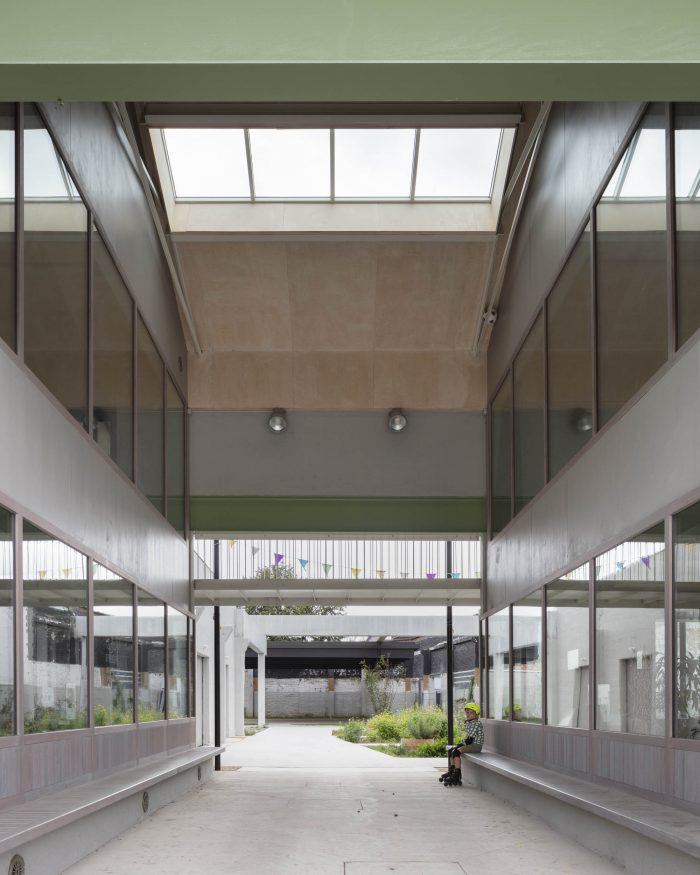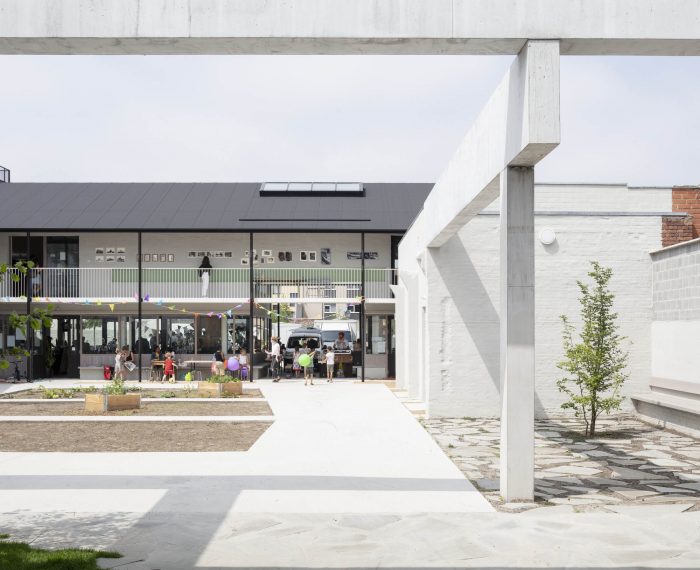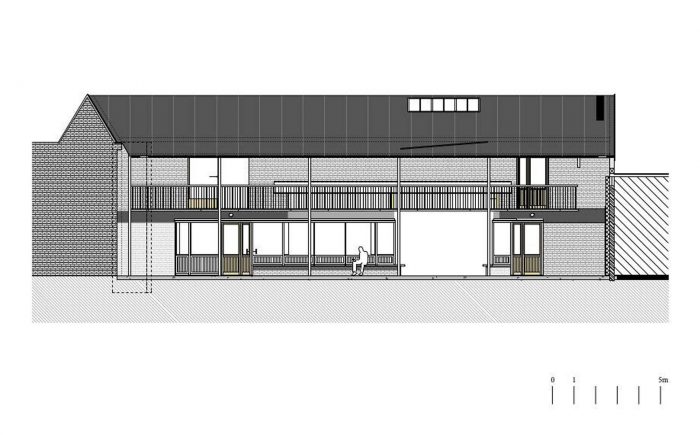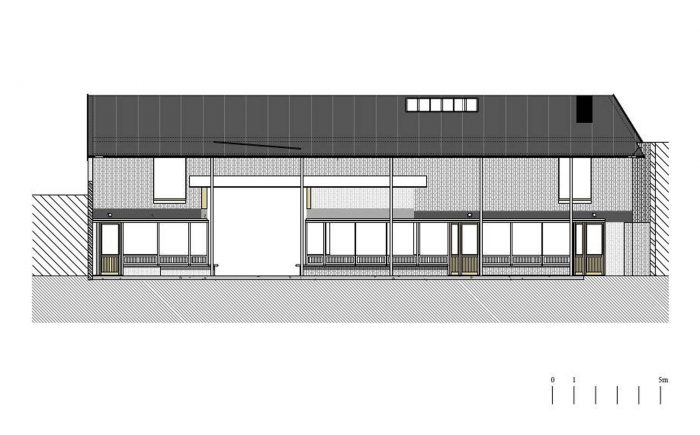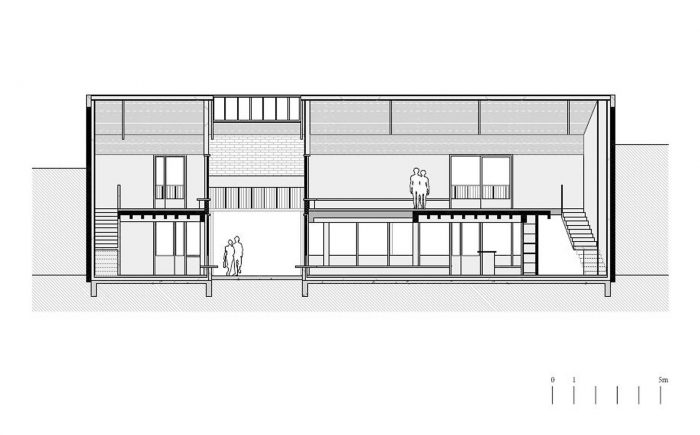以前的自助商店 “Standdaert “的场地与Ledeberg密集中心的2条街道相连。除了这种联系,该场地深入到内部区域,被花园围墙和建筑外墙包围。通过移除场地周围的一部分,在城市中形成一个开口,突然出现一个视角。
The site of the former do-it-yourself shop ‘Standaert’ is linked to 2 streets of the dense centre of Ledeberg. Apart from this link, the site reaches deep into the inner area, surrounded by garden walls and outbuildings. By removing a part of the site’s surroundings, an opening is made in the city, and suddenly a perspective appears.
设计师的主要意图是尽可能地保持公园的规模,同时对这个密集的城市结构的两条街道产生影响。建筑空间是有限的,并合理地使用。
The main intention of the designers was to keep the size of the park as large as possible and to also have an impact on both streets of this dense urban fabric. The built space was limited and used rationally.
它太年轻了,不能被列为古迹,但部分由于精细的金属桁架和沉重的木梁,它已经是一个 “年轻的 “工业遗产。由于其作为商店的长期服务,它已经成为根特居民的城市记忆的一部分。事实上,’Standaert’是比利时最古老的自助商店。
It is too young to be listed as a monument but, partly due to the fine metal trusses and heavy wooden beams, it is already a ‘young’ industrial heritage. Because of its long years of service as a shop, it has become part of the city’s memory for the residents of Ghent. In fact, ‘Standaert’ was the oldest do-it-yourself store in Belgium.
设计方案保留并恢复了中心的仓库,因为它是该地点最美丽的现有结构。它将是一个大型的、细长的建筑,垂直于场地的轴线而立。这个前仓库成为场地的跳动中心,有4个工作室/多功能空间,许多社区活动将在这里进行。一个向山脊开放的大通道连接着公园的两边。
The design proposal retains and restores the warehouse in the centre, as it is the most beautiful existing structure of the site. It will be a large, slender building standing perpendicular to the axis of the site. This former warehouse becomes the beating heart of the site with 4 ateliers / polyvalent spaces where many community activities will take place. A large passage, open to the ridge, connects both sides of the park.
从仓库里,游客可以看到公园的一大部分。该建筑探索了内部和外部之间的边界的可能性。靠外墙的木制长椅提供了在宽敞的屋顶交叉口下会面的空间。透明的底座增强了视野。除其他事项外,它还容纳了 “小旅馆”,即邻里之间保持开放的小咖啡馆。上层的工作室有一个更内向的特点。
From the warehouse, visitors will have an overview of a large part of the park. The architecture explores the possibilities of the boundary between inside and outside. Benches against the façade’s timberwork provide space to meet under the spacious roof crossing. The transparent base enhances the view. Among other things, it accommodates ‘the inn’, the little café kept open by the neighbourhood. The studios on the upper floor have a more introverted character.
此外,在场地的一角有一个大的、明亮的天棚,可以容纳那些不太需要加热的活动,如邻里聚会、音乐会、市场等。当从Bertolfstraat街进入时,天棚构成了公园的背景。聋哑人中心,位于公共墙后面,在角落里有自己的入口到公园。这在聋人中心和邻里之间创造了一个全新的动态。
In addition, a large, bright canopy in the corner of the site accommodates activities that have less need of heating, such as neighbourhood parties, concerts, markets, etc. The canopy forms the background of the park when entering from the Bertolfstraat. The deaf centre, which lies behind the common wall, has its own entrance to the park in the corner. This creates a whole new dynamic between the deaf centre and the neighbourhood.
天篷在场地的公墙之间延伸,没有柱子,所以公园在下面自由运行。天棚是由拆除的棚屋中回收的层压椽子组成的。设计团队提出了同样的原则,通过在必要的地方开排水孔来重新利用现有的混凝土路面,但这个想法没有被城市认为是合格的。公园延伸到街道,将绿色植物带到人行道的边缘,简要地突破了一排排的外墙。入口处保持畅通,盲目的外墙被完成。马克-纳格扎姆(Marc Nagtzaam)的艺术作品装饰着盲目的外墙,就像钢线图一样,攀援的植物可以在上面生长。
The canopy stretches between the common walls of the site, columnless so that the park runs freely underneath. The canopy is made up of the recovered laminated rafters from the demolished sheds. The design team came up with the same principle for the re-use of the existing concrete pavement by making drainage holes where necessary, but this idea was not considered eligible by the city. The park extends to the streets, brings the greenery to the edge of the pavement, briefly breaks through the rows of facades. The entrances are kept clear and the blind facades are finished. Works of art by Marc Nagtzaam adorn the blind facades like steel line drawings against which climbing plants can grow.
Architects: AE-architecten, Carton123 architecten, murmuur architecten
Area: 525 m²
Year: 2019
Photographs: Michiel De Cleene
Landscape: Atelier Arne Deruyter
Art:Marc Nagtzaam
Clients:SOGent
Engineering And Consultants:H110 architecten en ingenieurs
City:Ghent
Country:Belgium

